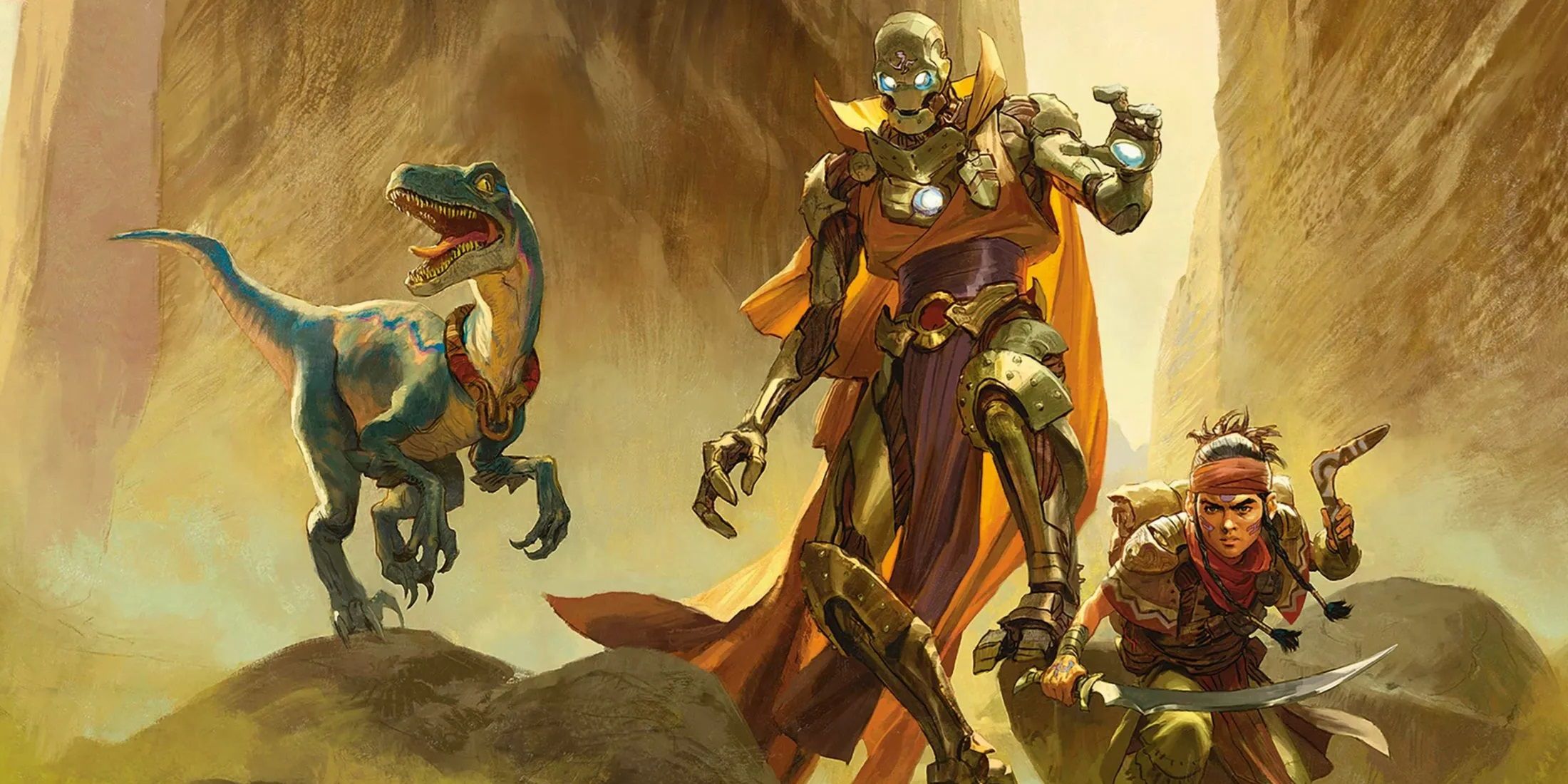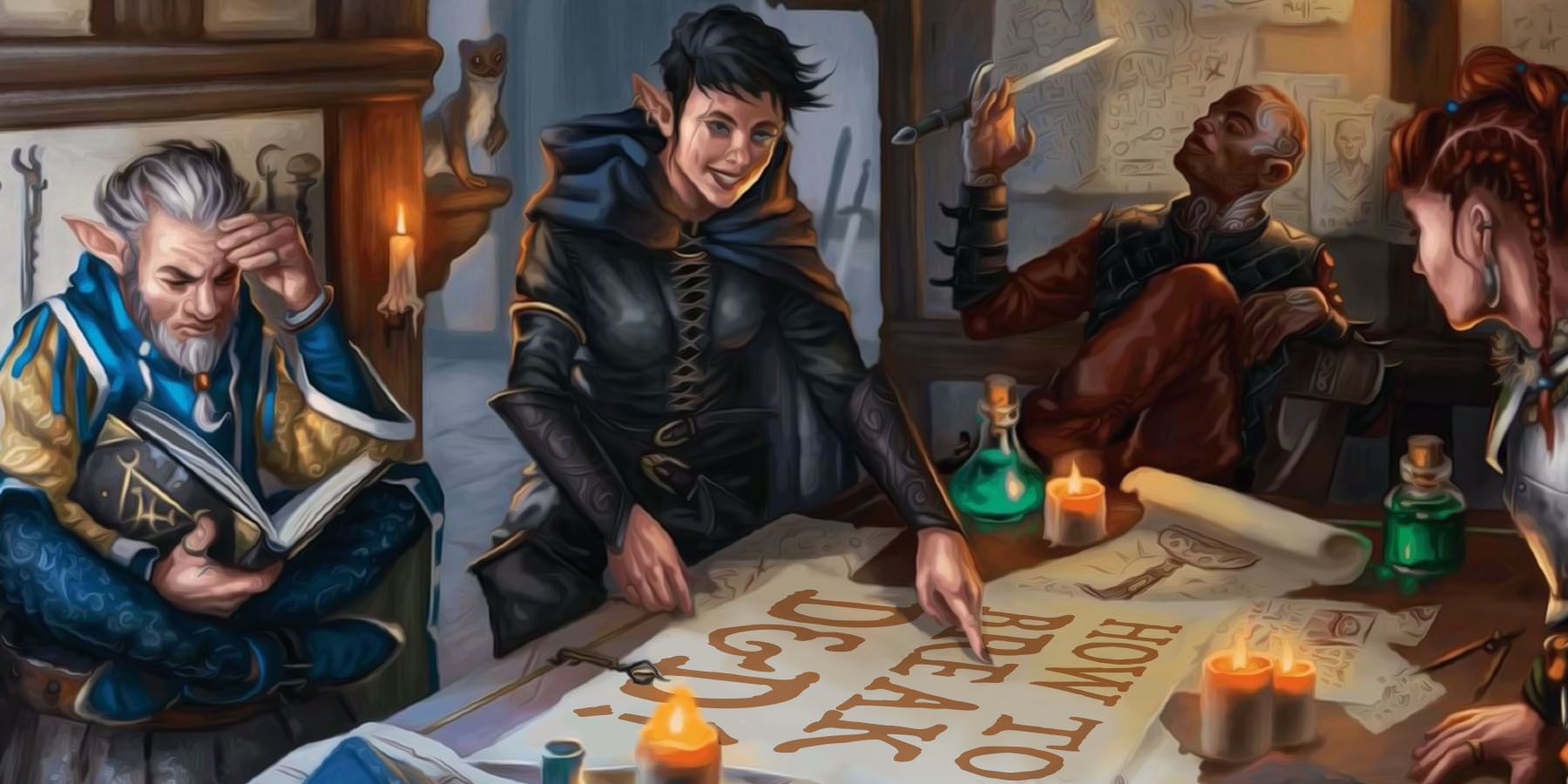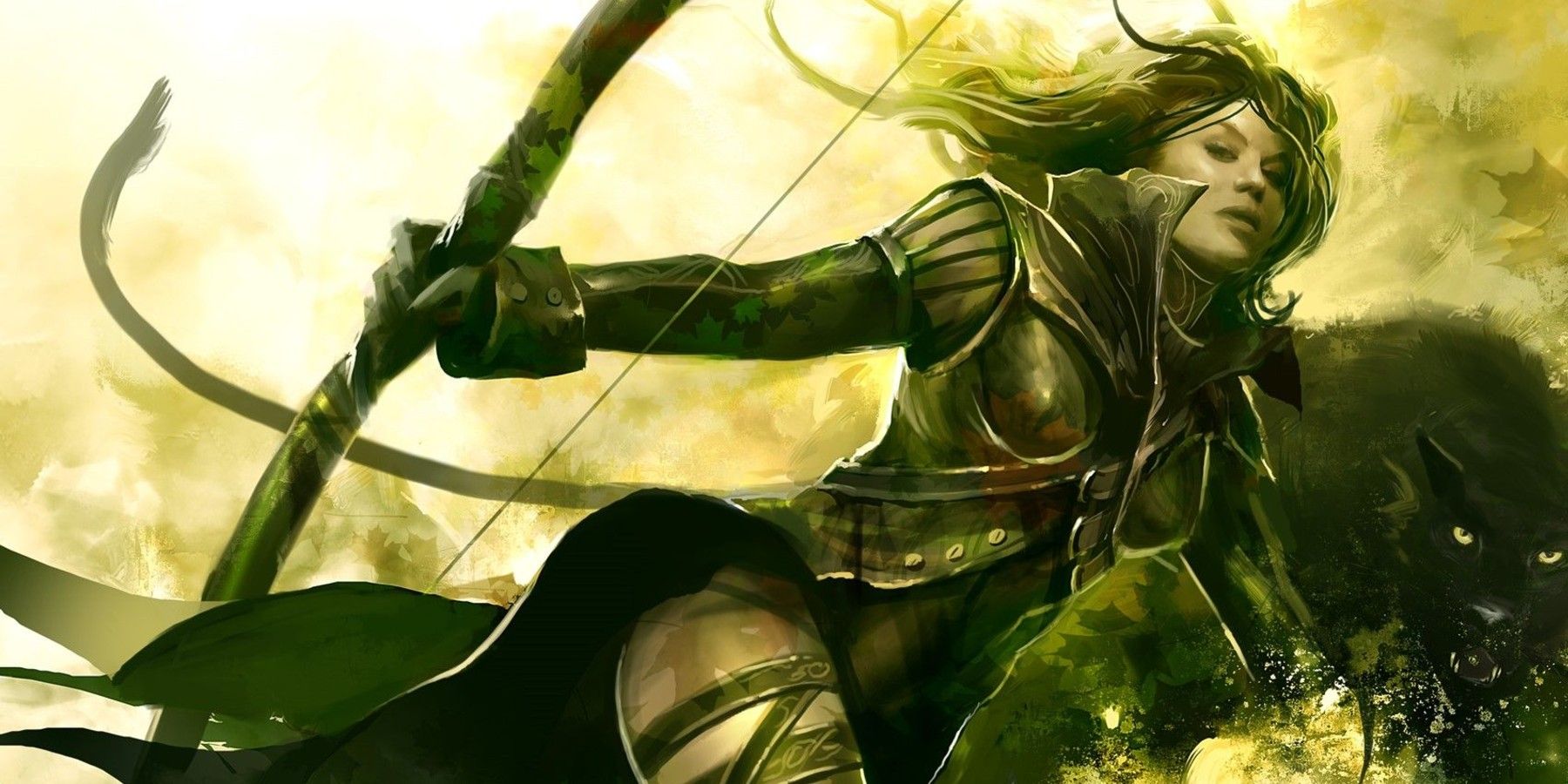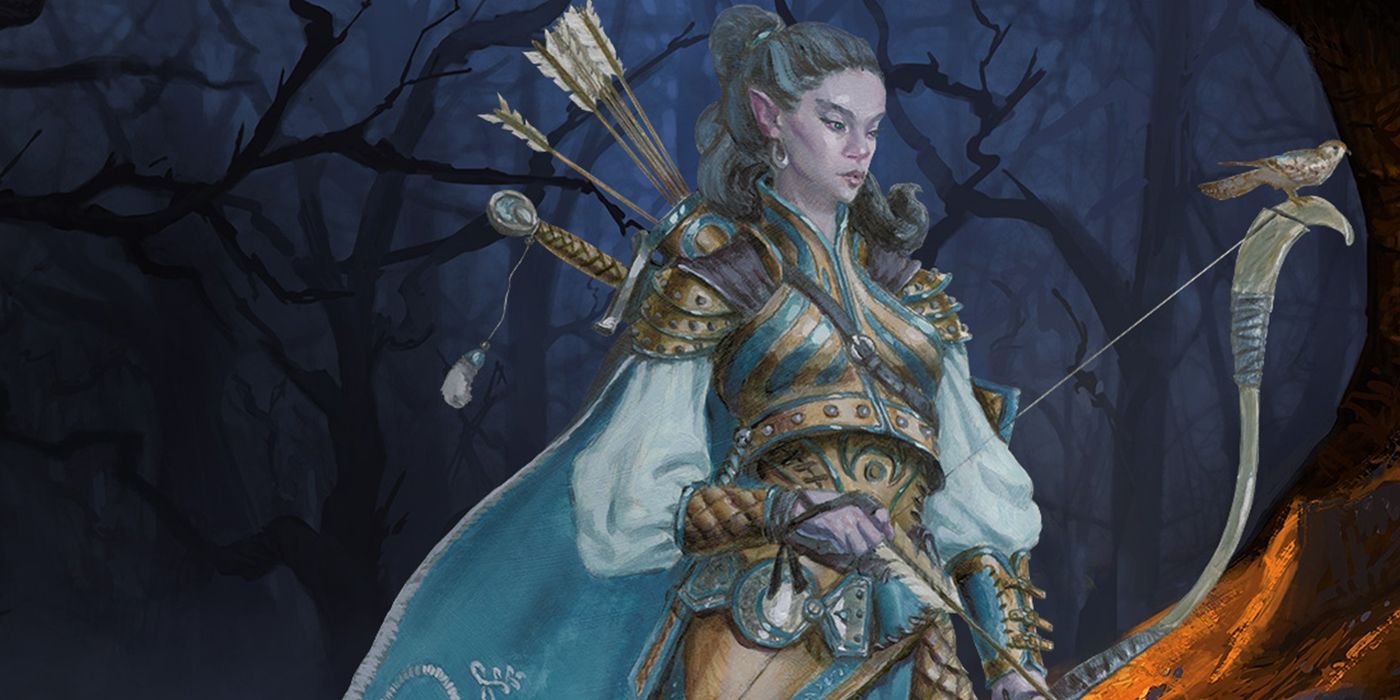Not all Dungeons & Dragons players go charging headfirst into battle wielding a massive sword or flinging fireballs. Many characters prefer to strike from a distance, staying away from the fray and dealing damage out of sight. A well-placed arrow or thrown dagger may be the difference between life and death for a party member caught in a head-to-head struggle with a foe.
Fighting styles such as these rely on ranged attacks. Though melee and ranged blows function quite similarly, there are a few distinctions between these two main types of weapons in D&D. Before a player draws their bow, here's everything they should keep in mind when springing into action.
Types Of Ranged Weapons
Like melee weapons, there are two main categories of ranged weapons in D&D: simple and martial. Usually, when player characters loot or purchase weapons in-game, the DM will let players know whether a weapon is simple or martial.
There are fewer types of ranged weapons than melee weapons, and they don't offer quite as much versatility as melee weapons when it comes to damage type. Whereas their close-quarters cousins may slash, pierce, or bludgeon, ranged weapons almost exclusively deal Piercing damage (with the exception of Slings). However, Piercing is an effective form of damage for many enemies, and for those who prefer to stay out of sight, it serves their purposes just fine.
Simple Ranged Weapons
Simple weapons are basic tools often found in the hands of the common folk, and nearly every class is proficient with these weapons starting at Level 1. Wizards, Sorcerers, and Druids, while they do not have proficiency with all simple weapons, do have mastery over any items included in their starting equipment.
- Light crossbow: Deals 1d8 piercing damage
- Dart: Deals 1d4 piercing damage
- Shortbow: Deals 1d6 piercing damage
- Sling: Deals 1d4 bludgeoning damage
Martial Ranged Weapons
Unlike simple weapons, martial weapons require a bit more training and practice to use. Barbarians, Fighters, and Paladins all begin the game with proficiency in these weapons, but any other character may gain the ability to use them skillfully with the Martial Weapon Proficiency feat.
- Blowgun: Deals 1 piercing damage
- Heavy crossbow: Deals 1d10 piercing damage
- Hand crossbow: Deals 1d6 piercing damage
- Longbow: Deals 1d8 piercing damage
- Net: Nets do not deal damage; rather, a successful attack with a net will restrain the target until it is freed. While restrained, a creature's speed is 0; i.e., it cannot move. Attacks against a restrained creature have advantage, and attacks it makes have disadvantage.
Making Ranged Weapon Attacks
Attacking with a ranged weapon is a simple process, and works just like any other attack roll in D&D. To determine whether an attack hits, players will use their character's Dexterity modifier. Roll a d20, and add this number to the result (except in the case of a critical success or failure). Add the character's proficiency bonus if applicable.
If the final number exceeds the enemy's AC, the attack will hit, and the player can roll to determine how much damage their attack has done. The appropriate die for a damage roll is determined by the weapon type, as listed above.
Who Uses Ranged Weapons?
Depending on build and subclass, ranged weapons can find themselves in the hands of a wide variety of characters. Since these weapons are based on Dexterity, those with a high Dex skill are more likely to use these weapons. Classes that frequently rely on ranged weapons as their main damage-dealers include:
- Rangers: Starting equipment for this class always includes a longbow and 20 arrows.
- Dexterity-based Fighters: A longbow and a light crossbow are both among options for starting gear.
- Rogues: This class may choose to start with a shortbow, although many Rogues may prefer melee weapons with the Finesse property.
Though they are less frequently associated with ranged weapons, the following classes also may include such items among their starting equipment. Often in these cases, players will be able to choose between a melee and ranged option; the ranged choice is usually better for a character whose Dexterity is higher than their Strength. These characters may rely on these weapons if they are out of spell slots or ki, Silenced, or facing an opponent resistant to magic.
- Bards: May start with any simple weapon.
- Clerics: May start with a light crossbow and 20 bolts.
- Druids: May start with any simple weapon. If choosing a ranged option, slings are recommended, as they are the only ranged weapons with which Druids have proficiency.
- Monks: Though Monks typically focus on unarmed strikes, they always have 10 darts included in their starting equipment. They may also start with any simple weapon; ranged or finesse weapons work well for these class considering its high Dexterity.
- Sorcerers: May start with a light crossbow and 20 bolts.
- Warlocks: May start with a light crossbow and 20 bolts.
Properties Of Ranged Weapons
Every weapon in D&D has a set of properties, attributes which govern how that weapon is used in combat. Certain properties are specific to ranged weapons; thus, those who favor bows or slingshots should understand how the following properties work.
Ammunition
A bow is useless without an arrow. Characters who rely on ranged weapons need a supply of arrows, bolts, bullets, or whatever type of ammunition their weapon of choice requires. As noted above, starting equipment typically includes 20 units of necessary ammo, but once it's used up, characters will have to find more.
Depending on the campaign, players, and DM, those involved in a game may or may not choose to keep track of ammunition. In a casual game that's more focused on narrative, players may decide that everyone has unlimited ammo, to help keep the story from getting bogged down in minutia. Such cases might be narratively explained with magical quivers that never run out, or retrieving ammo after a fight. For other players, though, monitoring and carefully conserving ammunition is a fun part of the game's strategy. It's up to the group to decide what works best.
Loading
Some weapons that require ammunition may have the Loading property; namely, crossbows and blowguns. This indicates that time is required to properly load the weapon, and thus, the user can only fire it once per action, bonus action, or reaction. For example, a level 5 Fighter with the Extra Attack feature can typically attack twice when using the Attack action, but when using a crossbow, they may only fire a single bolt. As an alternative, they may choose to utilize a separate weapon in their second attack.




-1.jpg)
.jpg)


